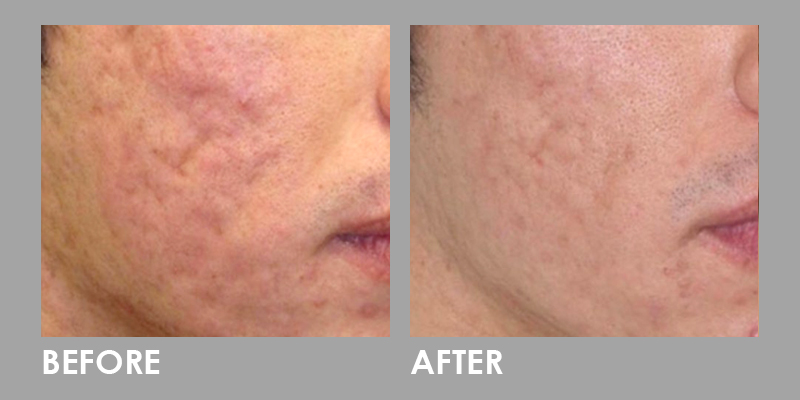What Causes Acne?
Acne is a skin disorder that commonly occurs during puberty; however adults can also be affected by it. Pores in our skin are connected via follicles that act as passageways to oil glands, which are placed underneath your skin. These glands produce a natural liquid known as sebum which help to carry dead skin cells through the follicles, bringing them to the surface of your skin. Hairs grow out of follicles, and when an accrual of oil under the skin blocks these follicles, pimples begin to grow and form.
The majority of of 11 to 30 year olds will experience acne at some point in their lives. It affects both men and women, but younger men are more likely to get acne due to the presence of higher amounts of testosterone which can exacerbate the condition. If you haven’t gotten acne yet, you are one of the lucky few! However, most of us have experienced acne at one point of time.
How Can Acne Scar Be Treated?
Using the new technology of Fractional Laser Resurfacing (Lux1540, non-ablative) can obtain results that are similar to that of deep chemical peels or ablative laser resurfacing, minus the discomfort or the usual downtime associated with such techniques. The technology utilises laser energy micro beams to penetrate and break down skin tissue through the epidermis. Your body will naturally heal and during the process, creates new, healthy tissue to replace the affected areas that have undergone treatment. Scars should be of a lighter colour and your skin texture will be more even,* leaving no visible wounds and allows you to apply make-up immediately following the procedure.



How CO2 Laser Works?
FOTONA 4D Fractional Laser Demonstration
Fractional CO2 Laser Demonstration
FOTONA 4D Fractional Laser Demonstration
Fractional CO2 Laser Demonstration
How Often?
Depending on your skin, additional treatments are spaced 1-4 weeks apart for a total of 4-5 treatments. Over the next few months, further collagen remodelling and some skin tightening will help to maintain your acne-free complexion. Furthermore, a healthy skincare routine consisting of facials and products should help you to maintain your results as well. Do consult your doctor to determine course of action for your skin.
This treatment is suitable for individuals who have skin that is aging, wrinkled, sagging or has an irregular texture. It may also be used to treat skin damaged by the sun or with irregular pigmentation.
Individuals who are of a darker skin tone are not advised to undergo this treatment – this is because prolonged healing of the surface is required. In many cases, pigmented skin heals itself via hyperpigmentation, and this may take several months of treatments and even additional laser treatments to heal fully.
You should consult your doctor to ensure that this treatment is suitable for your skin and weigh up the time required along with the risks. The downtime is fairly lengthy and you should be fully aware of the requirements and possible outcomes before making an informed decision.






